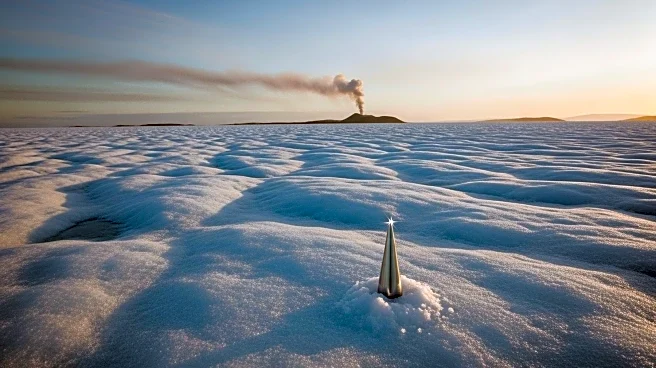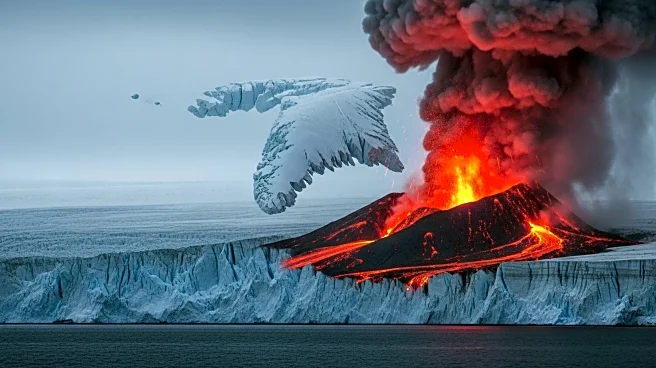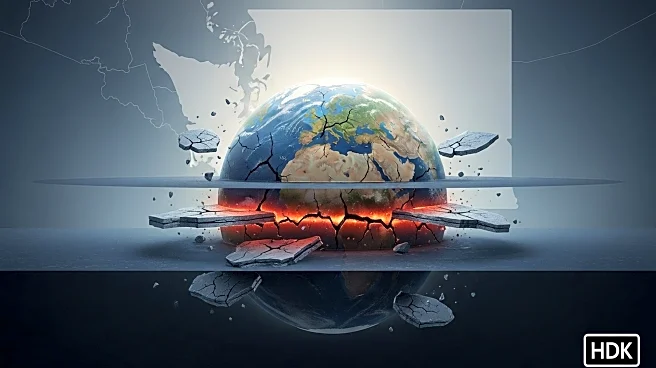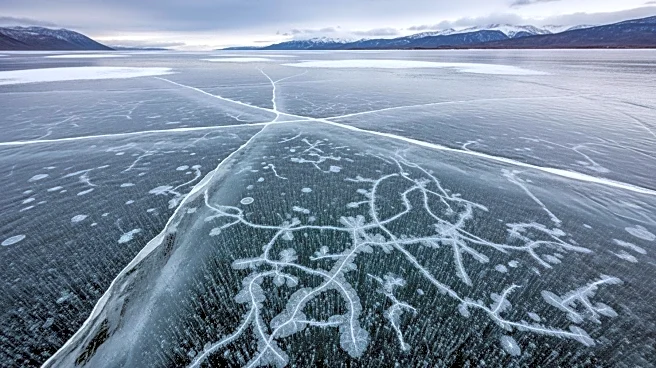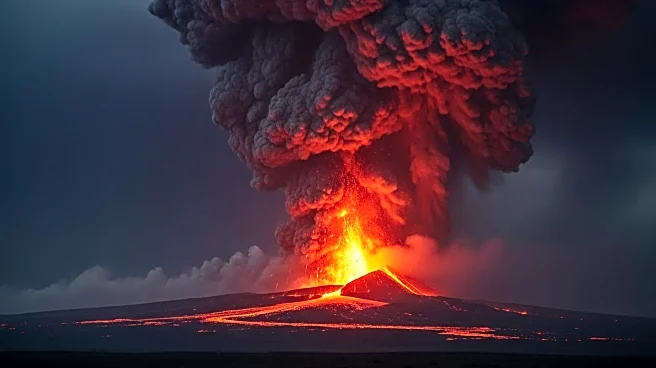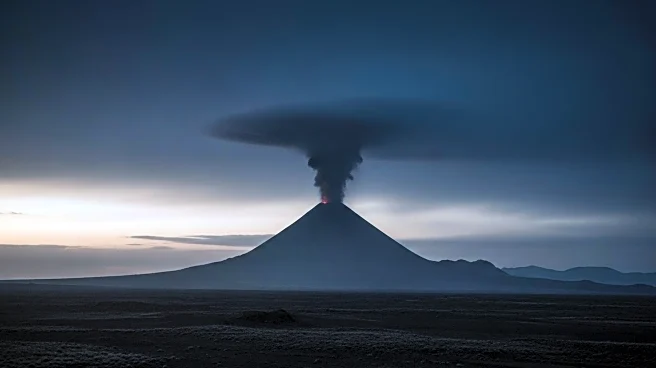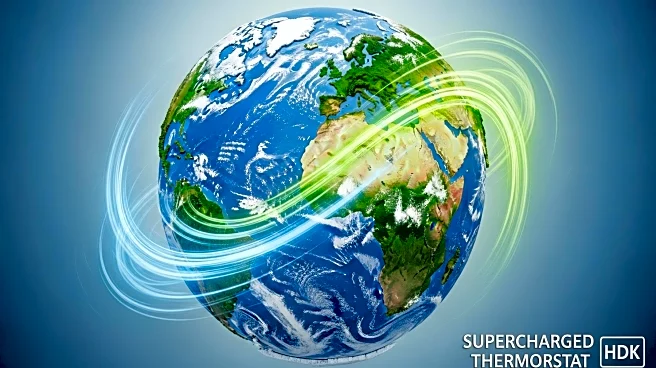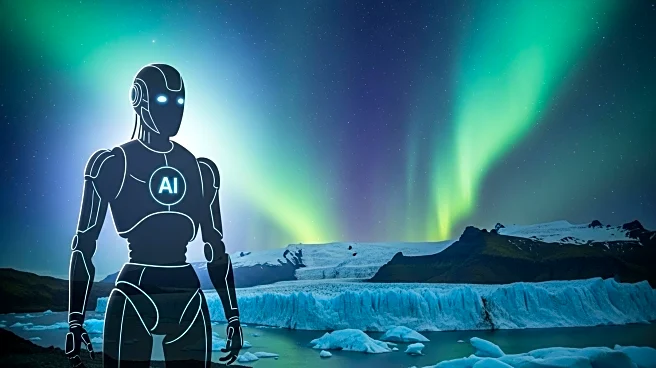What's Happening?
A recent study has proposed a volcanic eruption in Iceland as the source of a mysterious platinum spike found in Greenland's ice sheet, challenging the previous hypothesis of a meteorite impact. The platinum concentration, dated to around 12,800 years ago, coincides with the Younger Dryas Event, a period of significant cooling in the northern hemisphere. Researchers suggest that volcanic activity, rather than an extraterrestrial impact, may have triggered this climatic shift. The study analyzed volcanic pumice samples and found no platinum in the Laacher See eruption, indicating that the platinum spike may have originated from Icelandic volcanic activity.
Why It's Important?
Understanding the cause of the Younger Dryas Event is crucial for predicting future climate changes. The volcanic explanation suggests that large eruptions can significantly impact global temperatures by releasing sulfur into the atmosphere, which reflects sunlight and cools the planet. This research highlights the potential for volcanic activity to alter climate patterns, providing insights into how similar events could affect Earth's climate in the future. The findings also challenge the comet impact theory, prompting a reevaluation of historical climate events and their triggers.
What's Next?
Further research is needed to explore the volcanic hypothesis and its implications for climate science. Scientists may investigate other geological samples to confirm the volcanic origin of the platinum spike and study the effects of volcanic eruptions on climate. This could lead to a better understanding of the mechanisms behind climate shifts and inform strategies for mitigating the impacts of future volcanic events. Additionally, the study encourages a broader examination of past climate events to refine models predicting Earth's climatic responses to natural phenomena.
Beyond the Headlines
The study raises questions about the role of volcanic activity in shaping Earth's climate history. It suggests that volcanic eruptions may have played a more significant role in past climate changes than previously thought, challenging the dominance of extraterrestrial impact theories. This perspective could influence how scientists approach the study of ancient climate events and their causes, potentially leading to new insights into the complex interactions between Earth's geological processes and climate.
